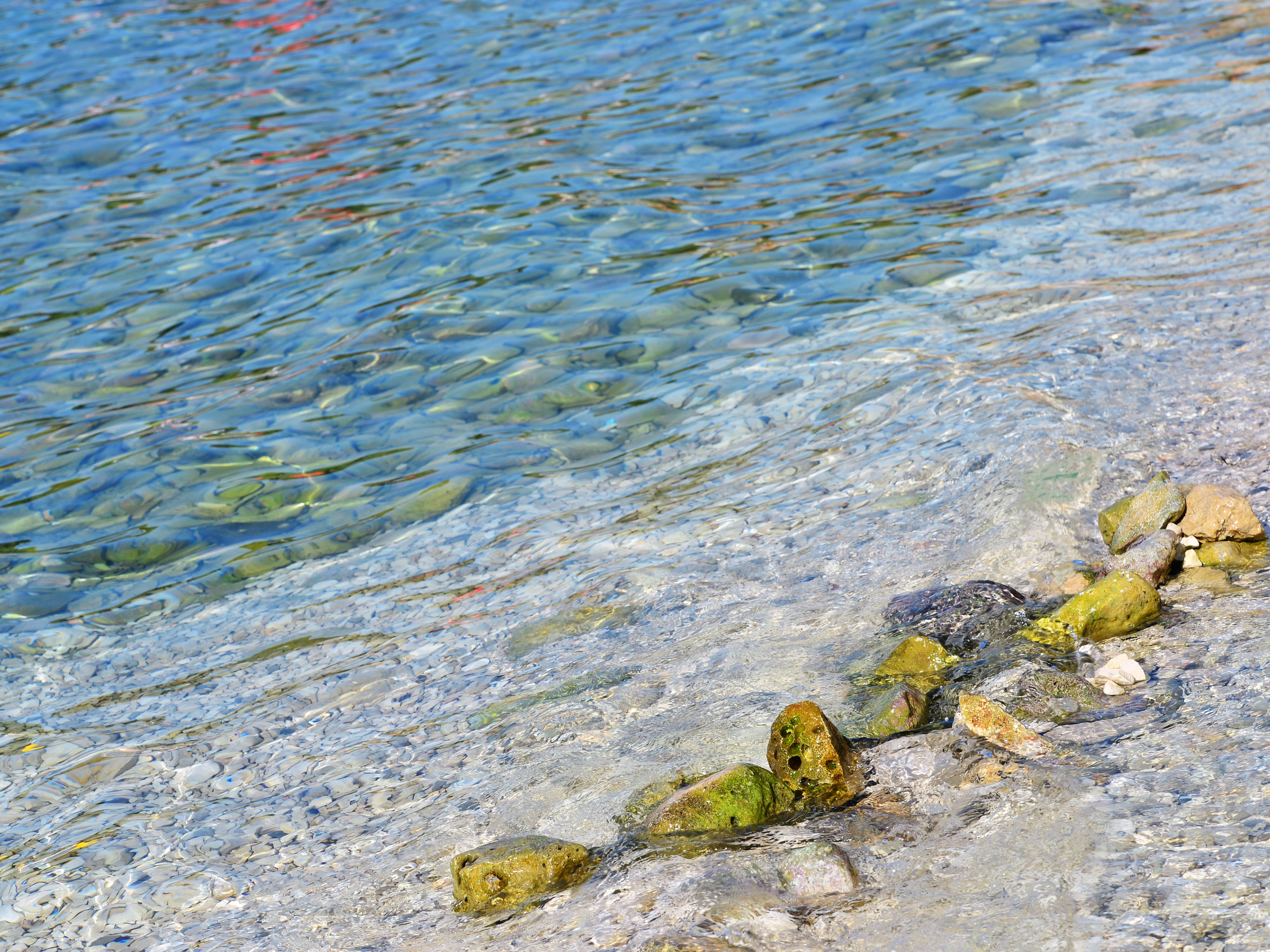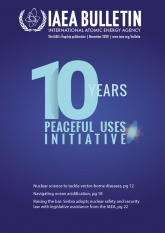
If you would like to learn more about the IAEA’s work, sign up for our weekly updates containing our most important news, multimedia and more.
Navigating Ocean Acidification
Coordination Centre advances global efforts in ocean acidification education, capacity building and science
Joanne Liou
Navigating ocean acidification
Playing a key role in the Earth’s climate and weather systems, as well as in the global carbon cycle, the ocean is an immeasurable force of nature. However, human activities have fundamentally altered the ocean’s chemical composition. Since the late 1980s, 95 per cent of open ocean surface water has become more acidic, a process referred to as ocean acidification. With atmospheric carbon dioxide levels 50 per cent above pre-industrial levels, the problem is getting worse.
“The ocean continuously absorbs about one quarter of the carbon dioxide that is emitted into the atmosphere every year,” said Peter Swarzenski, Head of the IAEA’s Radioecology Laboratory in Monaco. “While this is very good to lessen the deleterious impacts of sustained climate change, it also comes at a steep cost as seawater becomes more acidic.”
The IAEA supports countries around the world in utilizing nuclear and nuclear-derived techniques to develop a science-based understanding of changes in the ocean. In response to growing concerns from the scientific community and governments regarding ocean acidification, the IAEA established the Ocean Acidification International Coordination Centre (OA-ICC) in 2012. Supported by the Peaceful Uses Initiative, it focuses on science, capacity building, outreach and communication about the status and trends of ocean acidification, promoting science-based decision making.
“ The establishment of a regional hub is critical to monitoring the seas and oceans, which are reeling from ocean acidification, and the resulting implications for vulnerable ecosystems.
Exploiting waves of scientific data
“To reduce the impact of ocean acidification on select marine organisms and the possibility of altering marine ecosystems, we need a series of data points indexed chronologically to observe trends and assess the ocean’s viability,” said Sheck Sherif of Liberia’s Environmental Protection Agency. “To understand ocean acidification, data is needed on temperature, salinity, oxygen, pressure and the carbonate system. It is essential that researchers and industry practitioners can readily access and use this information.”
In collaboration with partners such as the Intergovernmental Oceanographic Commission of the United Nations Educational, Scientific and Cultural Organization (UNESCO), the World Meteorological Organization, the Global Ocean Observing System and the International Ocean Carbon Coordination Project, the OA-ICC supported the launch of the Global Ocean Acidification Observing Network (GOA-ON) in 2013. The GOA-ON data portal provides information on ocean acidification monitoring facilities and includes access to real-time data. GOA-ON also facilitates a global approach to prevent duplication of monitoring efforts and to define a common research strategy.
This global network is comprised of about 750 scientists from 100 countries. One of the main goals of GOA-ON is to increase monitoring in areas where data is scarce, including the coasts of Africa and the Indian Ocean. “The lack of availability of instrumentation has hampered the efforts of most developing countries, and the research organizations situated in them, to make sustained measurements. In response to global needs, the GOA-ON developed simplified methods and equipment kits for measuring water quality, pH and total alkalinity,” Sherif said. The kits, known as ‘GOA-ON in a Box’, have been distributed to scientists in 16 countries in Africa, the Pacific and Latin America.
Increasing capacity across the seas of Asia
More than 30 experts from Bangladesh, India, Malaysia, Myanmar, the Philippines, Sri Lanka and Thailand convened in Kolkata, India, in January 2020, to strengthen scientific research capacity in South and South East Asia. The OA-ICC supported the workshop, hosted by the Centre for Climate and Environmental Studies (CCES) and Integrative Taxonomy and Microbial Ecology Research Group at the Indian Institute of Science Education and Research Kolkata.
Lectures and training focused on carbonate chemistry, biological effects, experimental setup, monitoring approaches, modelling and socioecology. A field trip to a wildlife sanctuary allowed for on-site discussions on sampling approaches. “The Sajnekhali Wildlife Sanctuary and surrounding areas of the Indian Sundarbans mangrove forest provided the participants with an understanding of the challenges of undertaking ocean acidification measurements in dynamic coastal ecosystems,” said Punyasloke Bhadury, Head of CCES.
Participants also discussed closer cooperation and coordination in ocean acidification research. “There is an ongoing discussion between scientists and policy makers to develop another regional hub and mechanisms for funding support, capacity building programmes and instrumentation support,” Bhadury said. “The establishment of a regional hub is critical to monitoring the seas and oceans, which are reeling from ocean acidification, and the resulting implications for vulnerable ecosystems, as well as the socioeconomic effects.”
Streaming information to raise awareness
The OA-ICC is an active voice in the international sphere, elevating the topic of ocean acidification to the forefront of discussions at the United Nations Climate Change Conferences and on the Sustainable Development Goals. In collaboration with the Intergovernmental Oceanographic Commission of UNESCO, the OA-ICC hosted an event as part of the United Nations High-Level Political Forum on Sustainable Development in July 2020 to highlight success stories and ways to advance capacity building to address ocean acidification. At the virtual meeting, more than 90 participants heard from a panel of experts that called for more integrated, science-based management to minimize the impacts of ocean acidification on wildlife. “As a United Nations agency, we seek to empower Member States to start ocean acidification monitoring, contribute to the reporting process of Sustainable Development Goal 14.3 on ocean acidification and, ultimately, to inspire mitigation and adaptation actions,” Swarzenski said.
The OA-ICC also manages a dedicated, open-access website that offers a steady stream of scientific reports, media coverage, policy briefs and other material pertaining to ocean acidification. The news stream centralizes information to raise awareness about ocean acidification and to amplify efforts addressing the issue and its implications. “One of the key objectives of the OA-ICC is to facilitate the exchange of information on ocean acidification and make resources available to stakeholders and policy makers around the world,” Swarzenski said. “We work with research programmes and organizations worldwide to effectively communicate on ocean acidification to a larger audience.”





